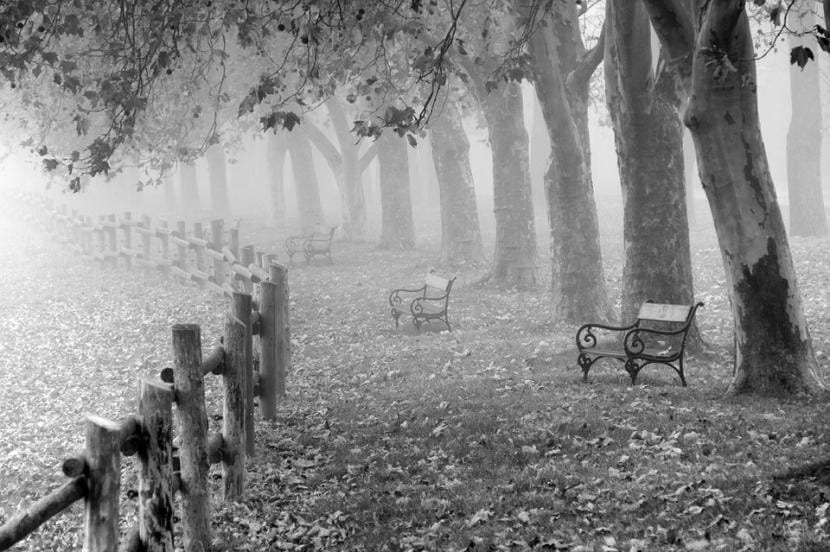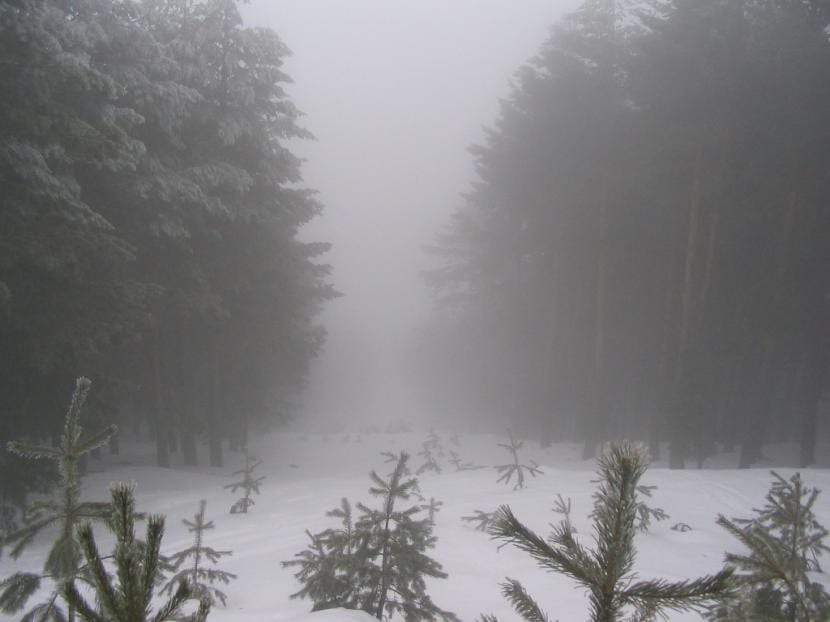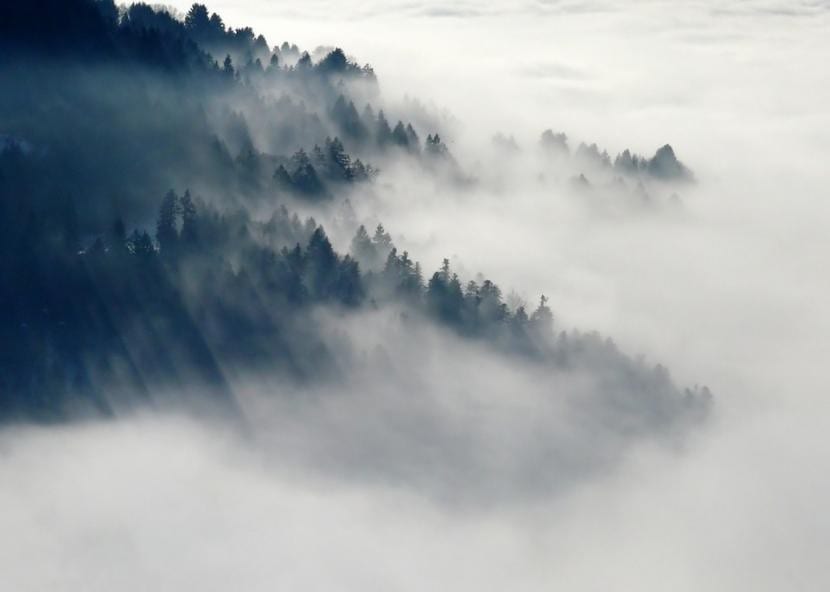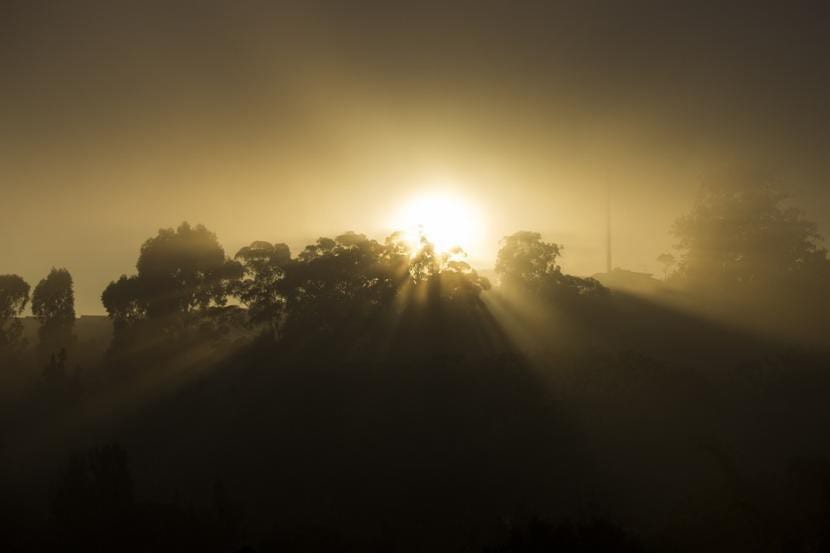
Surely you have wondered what fog is, right? It is a question that many of us ask ourselves, even as a child when when we wake up we see that the neighborhood we live in seems to have become a 'ghost neighborhood'. Well, in this special I'm not just going to talk to you about the fog, but also about the fog, since both concepts are often confused.
This way, when they happen again, you will know what difference is there between fog and mist.
What is fog?

The fog is a hydrometeor, that is, a set of particles of water, liquid or solid, falling, suspended in the atmosphere or lifted from the earth's surface by the wind, or deposited on objects on the ground or in the free atmosphere. Produces visibility of less than 1km. These water particles are not large enough to be precipitated by gravity, so they are often suspended.
How is it produced?
Especially during the months of December and January in Spain, the fog stars in almost all the sunrises of many communities. It is formed in situations of absolute stability, when an anticyclone is present and no wind is blowing. It occurs when the temperature of the lower layers of the atmosphere is lower than in the higher ones, or what is the same: when it is colder on the beach than in the mountains.
Types of fog

Although we might think that the fog is always the same in all places, the reality is that different types are distinguished:
- Radiation: which is what we see after sunset on a cloudless night, in autumn. It is one meter thick and does not last long.
- Of Earth: it is a radiation fog, but very superficial. It darkens less than 60% of the sky and does not extend to the base of the clouds.
- Advection: When masses of hot, moisture-laden air pass over cold soils, this type of fog is produced. It is very common on the coasts.
- Steam: appears when cold air passes over warm waters. This fog in which we can see in the polar regions.
- Precipitation: If it starts to rain and the air under the cloud is dry, our visibility will surely be reduced.
- Hillside: It is formed when the wind blows against the side of a mountain.
- From valley: this type of fog is the result of thermal inversion, caused by cold air that remains in the valley, while warmer air passes over it.
- Of ice: It occurs when frozen water droplets are suspended above the ground. It is very common in the polar regions.
- Upward sloping: occurs when there is a drop in pressure with altitude.
Is it dangerous to health?
Not at all. It is often thought that yes, it can cause us some harm, but the truth is that what fog is, is not harmful. The air that you are going to breathe the only difference it has with the one we breathe any other day is concentrates a greater amount of water vapor.
But what you should keep in mind is that those days there will be much more pollution by not blowing the wind, so if you are allergic you may notice that your symptoms get a little worse. And by the way, if you're going to take the car, tin a lot of caution on the road.
What is haze?

Now that we have seen what fog is, let's see what fog is. Well, mist is also a hydrometeor, which is made up of very small water droplets, between 50 and 200 micrometers in diameter. They reduce horizontal visibility at a distance of one kilometer or more.
It occurs naturally by atmospheric processes or the result of volcanic activity, and occurs frequently when in the atmosphere there is a cold air mass under a temperate one. In mist the air generally does not feel sticky and humid and the relative humidity is well below 100 percent. Another of its characteristics is that it forms a little dense grayish / bluish veil that covers the landscape.
And how is mist different from mist?

Mist at dawn
They are basically differentiated by observing them. Let me explain: fog does not allow you to see beyond 1km, while fog does. Further, the air when there is a fog bank is sticky and humid, since the relative humidity is close to 100%.
We will also know if it is fog when we cannot observe the sun's rays. The fog, being less dense, will allow us to see them without too much trouble; On the other hand, with the fog that will be impossible.
I hope I have clarified your doubts about these two meteorological phenomena that amaze children and adults so much.
Excellent article. Thanks 🙂
I'm glad it helped you, Alexis 🙂
Hello, I would like to know if you know something about another suspension hydrometeor called Gael… I can't find any information on this one, please. And this article is very interesting and I really liked it. Thanks 😀
Hi Ed.
Well, it doesn't ring a bell 🙁. I've been researching and haven't found anything either.
What I can tell you is that gale, which is an English term that means gale, are very strong winds of more than 50km / h, but nothing more.
We are glad that you found the article interesting.
A greeting.
Hello Monica, thank you for illustrating us in such a didactic and professional way, your explanation is very good, easy to understand and very useful.
Greetings from Chile, have a good week.
Thanks for your words, Sergio 🙂
His explanation is more than good, it allowed me to know the differences between these two phenomena and thus explain those that they correct without knowing a thousand.
Thanks to you, Liliana 🙂
Great data, thank you very much, greetings from Mexico
Hi Monica Sanchez
Thank you for explaining us in a didactic and professional way, a great favor I live in Cusco and I do not know what kind of phenomenon occurs in the place I live, Marcapata - Quispicanchin - Cusco, I would appreciate if you could give me that information ...
Greetings.
Hello Omar.
Thanks for your words.
Either of the two phenomena can appear if the appropriate conditions are met.
If you want to know, at any given time, if what there is is fog or mist, you can upload an image to a website like Tinypic or Imageshack, and then copy the link here.
Greetings 🙂.